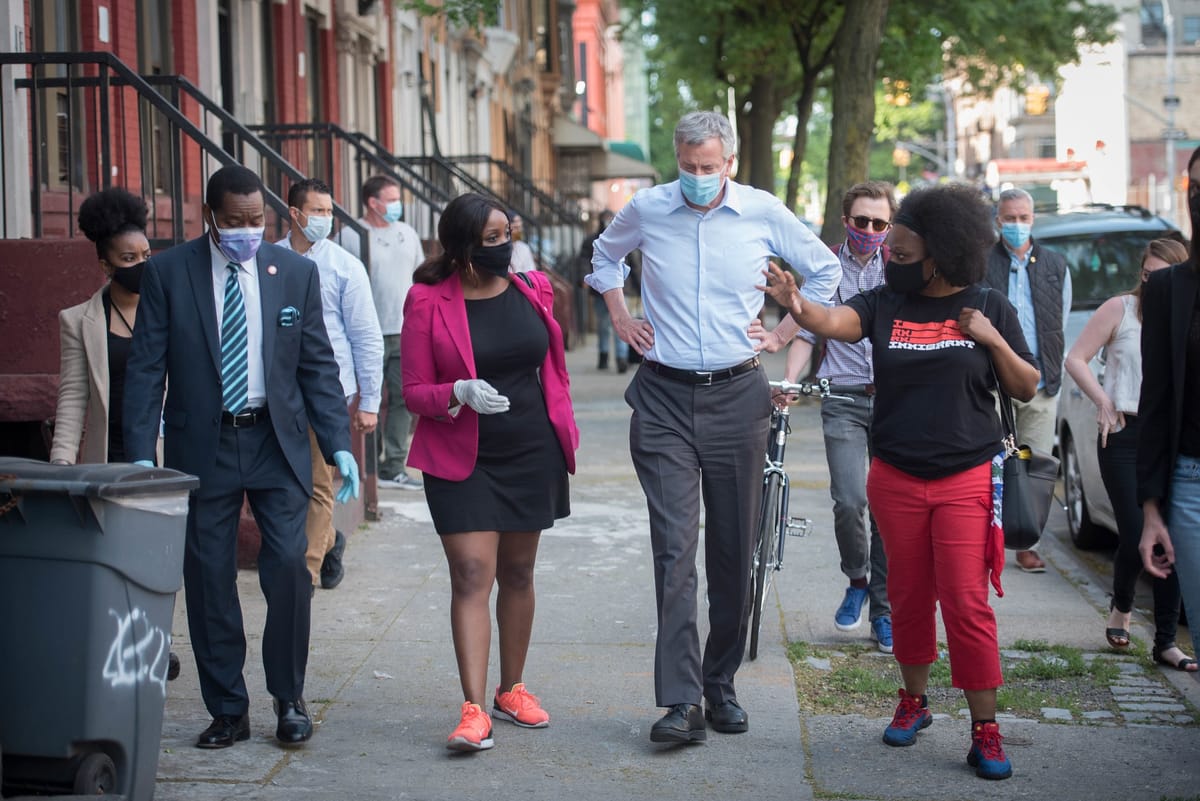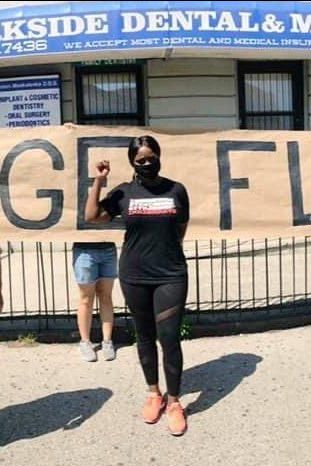Councilmember Farah Louis on Mayor’s Response, Continued Protests

In the last few weeks of protests, New York City has gone through a lot. Police cars drove into protestors in a now widely circulated video, Mayor Bill de Blasio has been criticized for the steps he has taken and his continued praise of the NYPD’s tactics, businesses across the five boroughs were looted and vandalized, and even the president has threatened military action on our city.
Last Sunday, Mayor de Blasio came to Central Brooklyn to meet with city officials and constituents, including Councilmember Farah Louis of the 45th district.
Walked stretch of Flatbush with @AMBichotte, @CMMathieuEugene & @FarahNLouis that witnessed some of the most challenging dynamics last night. Hearing from them and community about priorities like police accountability and increasing access to food and relief. pic.twitter.com/YxfYb9g3Z9
— Mayor Bill de Blasio (@NYCMayor) May 31, 2020
Louis says that she and the mayor discussed numerous topics, including the looting that occurred in the neighborhood, damage to small businesses, and the plan for the reopening of schools in the Fall.
“I just want to ensure residents here in Flatbush and East Flatbush are not targeted while walking, targeted while driving, because they’re black. Racial profiling is a real thing and a real issue, racism is a real thing and a real issue and we’ve see how real it is during the pandemic. [There are] consistent videos being shown of black people being abused by police officers,” Louis said. “We were very vocal with him regarding what we wanna see with criminal justice reform and the police.”
The City Council will soon introduce a bill to make chokeholds illegal, Louis says, and added that the Mayor voiced support of the repeal of Bill 50A, a law that protects police records.
Louis voiced concern, shared by other black and brown representatives, she says, about the implementation of the new weeklong 8:00 pm curfew.
“Black and brown officials, specifically in Brooklyn, I can only speak for us, we’re not happy with the curfew. The curfew further exacerbates the issues that we’re having in the city right now. [The Mayor] did have a conversation with the black, Latino, and Asian caucus on Monday, but the extension of the curfew will further exacerbate [the issues], because as you can see no one is adhering to it, people are still protesting,” Louis said.
Problems with the curfew included the fact that it was announced on television, and that the subsequent emergency alert was only sent out in English, something that could alienate many people, Louis says. She added that there are people who are not essential workers that are being forced to go to work, and that this could pose problems for them and potentially escalate.
Louis attended several of the protests in Brooklyn, and expressed concerns about outsiders with alternate goals infiltrating the true community.
“From what we’re hearing from the NYPD, these people are coming from other states, they’re coming into our city and our borough to appear as if they’re showing solidarity with us black people, but the complete opposite happens. They have their own intent and we denounce that,” Louis said. “What we want is peaceful protest, what we want is to be valued and [to] stop feeling dehumanized and expendable. Black people are just as human as any other race and we want to be respected for that.”
She added that there is a healing aspect to the protests, furthering the necessity of them.

“For [my constituents] this is an opportunity to grieve, this is an opportunity for them to be outspoken, it’s an opportunity for them to feel a sense of community. We’re quarantining at home and at the same time you’re watching a black person that looks just like you murdered.”
The Mayor’s response has been criticized by residents of the city, particularly after he defended the actions of officers who drove police vehicles into a crowd.
“Being a leader is not an easy feat. I think the Mayor is learning each and every day what could be done better. I see that he seeks to have better outcomes when it comes to whatever happened the night before. I look forward to him engaging more with council members and black and brown elected officials to understand what the systemic racism is looking like. I think there could have been better ways for them to address [the protests]. You saw the chief of police took the opportunity to be vulnerable with the protestors, to deescalate and to hear them, and to speak with them. We need more of that. We need the Mayor to be out more and have more conversations with constituents,” she said.




